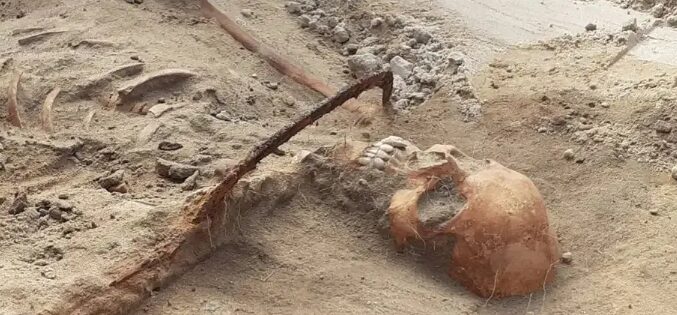Just in time for spooky season, archaeologists have unveiled chilling new details about the last moments of a “real vampire” from history. The remains of an elite woman, now dubbed “Zosia” by researchers, were unearthed in a medieval graveyard in Pień, Poland, revealing evidence that locals feared she was a real vampire. The 350-year-old skeleton includes eerie features suggesting that villagers took drastic measures to keep her from rising from the dead.
The 18-year-old “real vampire” was buried with a sickle across her neck and a padlock on her toe—a clear indication of fear-driven burial practices. Archaeologists believe these measures were intended to ensure Zosia wouldn’t return as an undead menace. Of the 100 skeletons at the burial site, Zosia alone bore such grave protections, marking her as uniquely feared. The sickle was placed in a way that would decapitate her if she tried to rise, while the padlock symbolized a more permanent form of binding. Researchers think this extra security against Zosia, who may have had physical deformities marking her as an outsider, stemmed from a belief that she was a real vampire.

Forensic artist Oscar Nilsson has worked with facial reconstruction on Zosia’s skull, recreating the face of this so-called real vampire. His detailed illustration suggests that Zosia had fair skin, blue eyes, short hair, and a single prominent incisor, adding to her image as a supernatural figure feared by locals. This “real vampire” is now part of a broader investigation into unusual burial practices in Eastern Europe, where concerns about vampires were common, particularly during the 17th-century Swedish-Polish conflicts.
At the cemetery, known as the “Field of Vampires,” other graves also showed protective measures, but none as extensive as those used for Zosia. The discovery of these strange burial practices aligns with historical accounts of villagers taking steps to guard against so-called real vampires, whom they feared would rise to terrorize the living.
Enjoy this story? Here’s more.

